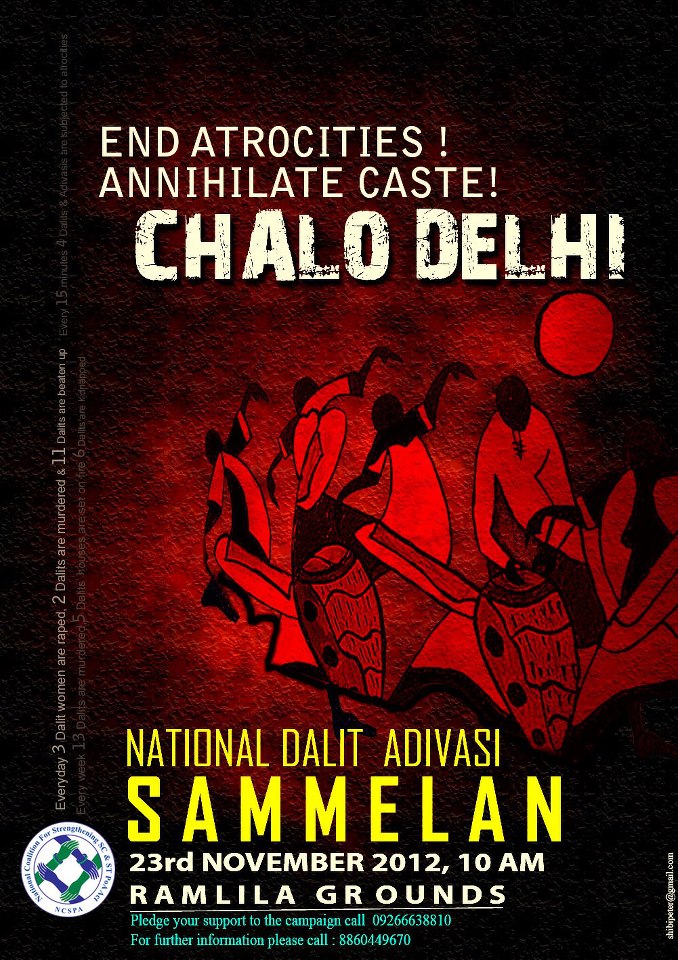Bhavani Etikala
In Telugu cinema, caste issues and atrocities were untouched concepts on the big screen until late. In 2020, Palasa 1978, a period-revenge-drama set in the 80’s, was released. Debut director Karuna Kumar said that the film was based on real incidents. The movie acknowledged the deep rooted reality of castesim in the Telugu states through the lens of a Dalit film maker. This film was appreciated at many levels, mainly for being able to shape the Dalit resistance on screen and the entry of the Dalit film maker into main stream film making which was absent till now.
On the other hand Tamil industry made movies like Pariyerum Perumal, Asuran, Karnan, Kaala that were successful at the box office. Asuran was remade in Telugu and released on July 20th as ‘Narappa’ with Daggubati Venkatesh as the lead actor. The movie is rated 8.5 on IMDb. Even before its release the movie received criticism. In this article we try to critically analyze the background of the movie.
The market share of Telugu films is 14%, the highest regional film industry market share in the country (according to a survey conducted by Statistica during 2019). 190 films were released in the same year. Telugu industry has “big stars” with a huge fan base. There are many popular instances where the actors, idolised by the fans, have established political parties. N. T Rama Rao’s Telugu Desam party is one such example. He rose to become the chief minister of Andhra Pradesh in 1983.
This is also the time which can be called as the genesis of nepotism in the industry. More number of male actors from the families were introduced considering the already established fan base of their families. People wanted to see these heroes doing miracles on screens. It is surprising to know that the scripts were written according to the charisma these actors hold among the masses. This became a trend and was seen until recently. These films largely addressed class issues and misery of the poor.
In 1985, six Dalit men were murdered brutally and three Dalit women raped by the dominant Kamma caste men in the Karamchedu village of Prakasham district in Andhra Pradesh. In 1994, the Guntur district court named 46 people as the accused and much later in 2008 the Supreme Court had sentenced the prime accused for life time and 29 others for three years in jail. Daggubati Chenchuramaiah, the father of one of N.T Rama Rao’s sons-in-law was killed by the People’s War Group. They claimed his death was a reply to the atrocities in the village.
Ironically, the accused in the massacre, Daggubati Chenchu Ramaiah and the protagonist Daggubati Venkatesh are related. This is probably the main reason why the movie is being criticized. Through the actor’s family was not involved in the violence they never strongly condemned the killings by the clan. It shows how insensitive the makers and team are and were towards the massacre. The trauma of the people of Karamchedu and other similar villages that witnessed such oppression is trivialised.
The original version of the movie ‘Asuran’ is based on the true incident of Kilvenmani massacre that occurred in 1968 in Tamil Nadu. A number of remakes have been made in multiple languages and at different times. Here the problem with this remake is that it did not put an effort to address the regional casteism in the Telugu states. The move that the caste conflict is being brought up by big production houses and actors is welcome and is also a first of its kind but it is equally important to question–by whom it is being made and for whom? The industry is dominated by the same people who are the oppressors in the village and the remake makes it evident that it bypasses this truth.
Vishal Bhardwaj’s film ‘Maqbool’, originally an adaptation of Shakespeare’s play ‘Macbeth”, was lauded and is considered as one of the brilliant adaptations in the context of Indian society. The team might have done a lot of reading and paperwork before the pre-production for the Indian audience and surely it fit. In the case of ‘Narappa,’ it is not such an attempt. Such a film cannot be made for the Telugu audience and probably the makers chose to ignore that. The film carries the same dialogues, scenes, and background music. The movie still managed to evoke nearly similar emotions as Asuran since the language generates a feeling of belonging.
Another problem is the portrayal of the movie which has an impact of caste politics within the team of the film. The movie looked more like a class issue while the hero referred to the other clan as “the rich” at many instances. There are a few scenes which could certainly have confused the audience for the movie to be around caste issues. The scene where the lady love of the young Venkatesh gets harassed by the agitated men of the upper caste landlord just because she puts on footwear in front of them. Why did the makers not use the words directly referring to the communities when it is non fiction film?.
Lastly, the films with plots around issues about the oppressed must carry representation. In Asuran the lead actor Dhanush represented the Dalit community in the film. Telugu cinema is way behind in this regard as the industry is highly dominated by the Kamma, Kapu and Reddy communities. To bring the caste atrocities onto the screen is a bold move in such a case. Movies like Rangasthalam, Palasa in Telugu and in Tamil Asuran, Karnan have used the period drama genre to touch upon this issue. This gives an understanding of how unjust the caste system was and is. There is a lot for the filmmakers to explore the nuances of casteism in the current times too.
Virata parvam is another film that is yet to be released under the same banner. The movie is also a period drama which is based on the naxalite movement in Telangana. The lead actor Rana is also from the same Daggubati family. The super successful films made on the same issues in almost all the industries set the market for such movies. However, the OTT platforms have added an advantage for the small budget films, low distribution costs for producers which means the profit margin is certain.
The audiences are ready to see out of box movies like AWE! which bravely showcased the love between a homosexual couple. It went on to receive a national award. People of Telugu states love cinema and they have embraced all kinds of movies from time to time. While appropriating the grief of the oppressed communities the filmmakers must feel responsible to research extensively with sensitivity.
~
Bhavani has completed PG diploma in Journalism from IIMC, New Delhi.









